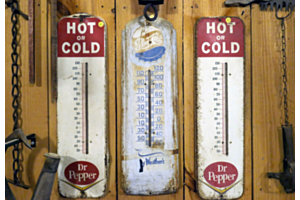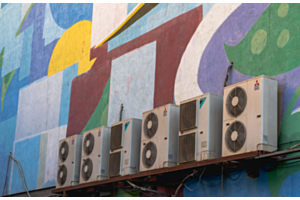Monthly Archives: October 2021
-
October 25, 2021
You want to pull the trigger on a ductless mini split system, but you haven’t quite yet. Maybe it’s that you’re so used to your old air conditioner or heater, or you don’t know how well a mini split system will work for you (the answer? Very well!).
Here’s something that might inspire you to take the plunge: federal rebates. The Non-Business Energy Property Tax Credit, which is in tax code Section 25 C, has been passed by Congress yet again for 2021.
Thanks to the credit, if you’ve purchased a ductless mini split system within the last year, you could be eligible for a rebate.
In 2020, the rebate was good for up to $500. Even better was that the Non-Business Energy Property Tax Credit was applied retroactively that year. If you had bought and installed a ductless mini split system between December 31st, 2017 and December 31st, 2020, you were potentially eligible.
In 2021, the Non-Business Energy Property Tax Credit expanded its rebate
-
October 18, 2021
You’re trying to cut down on your monthly bills, and one such bill that’s especially astronomical in your household is the water bill. You’re doing whatever you can to lower it, such as taking military showers (a type of very short shower) and limiting your gardening hose use.
You’d been meaning to replace your HVAC units anyway, and you’ve had your eye on a ductless mini split system for a long time. Before you invest in such a system, you must know, do mini splits require a lot of water?
No, ductless mini splits don’t use water. If anything, when you see water coming from the outdoor unit, that’s a problem.
How a Ductless Mini Split Works
Allow us to explain how mini splits work. Outdoors is a compressor, which can act as a heat pump unit. The compressor is attached to various indoor air-handling units in the home or commercial building.
Each air-handling unit is linked to a refrigerant line. The warm air pumps through the system,
-
October 11, 2021
handling unit’s filter is to purify the air that’s sent into your home. To access the filters, you need to find your indoor air-handling unit.
At the front of the unit should be a panel. You might have to unscrew or unclip it depending on the design, or perhaps the panel opens right up. Once you have the front panel open, you should be able to see the filters in the air-handling unit.
Since this is your first time changing them, the filters are likely going to be filthy. That’s okay, as you can clean them off and put them back in as good as new.
How Often Do You Need to Change Mini Split Filters?
You do some other basic maintenance to your ductless mini split system such as cleaning minor debris off the outdoor compressor. Add filter cleaning to that maintenance routine. Once per two weeks, you should check the filters. You might not have to replace them yet, but you at least want to see what kind of shape they’re in.
How
-
October 04, 2021
Although mini splits are reliable equipment, the components don’t last forever. That’s especially true if you misuse them or if you fail to get the indoor air-handling unit and especially the outdoor compressor maintained at least annually.
Let’s say that one of the parts of your ductless mini split system failed, be it the compressor or the air-handling unit. You remember the manufacturer of your mini split parts, but when you go to look up the parts, you realize that the unit you originally bought has been discontinued.
Frustrated, you begin to search for another manufacturer of compressors or air-handling units, and you find one you really like. The prices are right, and the specs of the unit match your old one perfectly. This is the replacement you’ve been looking for.
Or so you think.
Mixing and matching mini splits is not recommended. While technically, it could work, more than likely, you’re going to have one or more of the following issues.






